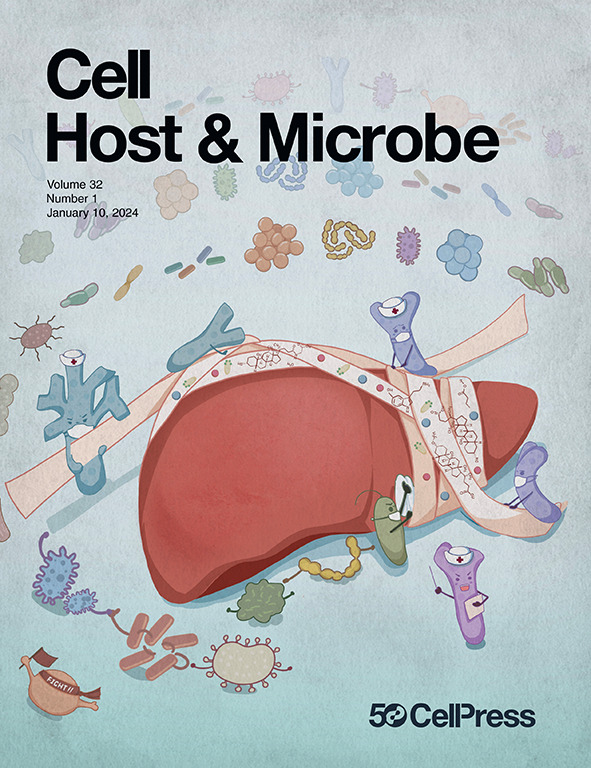Restoration of the human skin microbiome following immune recovery after hematopoietic stem cell transplantation
IF 18.7
1区 医学
Q1 MICROBIOLOGY
引用次数: 0
Abstract
The human skin microbiome is intricately intertwined with host immunity. While studies have elucidated microbial influences on immunity, understanding how immune alterations modulate this equilibrium remains limited. We investigated the dual impact of immune deficiency and hematopoietic stem cell transplantation (HSCT) on the skin microbiome in 24 patients with dedicator of cytokinesis 8 (DOCK8) deficiency, a rare inborn error of immunity. Analyzing 590 metagenomic and 534 16S rDNA sequencing samples across eight skin sites, we observed disrupted microbiota pre-HSCT (median eukaryotic viruses 67.6% vs. 0.04% in controls), with extremely diverse human papillomaviruses (HPVs) and polyomaviruses—including oncogenic viruses. Specific bacterial species markedly changed, including decreased Staphylococcus aureus post-HSCT. DNA eukaryotic viruses dramatically decreased (79.7% ± 28.3% to 4.9% ± 8.6%; p < 0.01) 12 months post-HSCT. Recovered microbial communities remained relatively stable through 1-year follow-up with clearance of oncogenic HPV and no convergence with transplant donors. These results highlight the immune system’s critical role in restoring microbial balance and skin health.

造血干细胞移植后免疫恢复后人体皮肤微生物群的恢复
人体皮肤微生物群与宿主免疫系统错综复杂地交织在一起。虽然研究已经阐明了微生物对免疫的影响,但对免疫改变如何调节这种平衡的理解仍然有限。我们研究了免疫缺陷和造血干细胞移植(HSCT)对24例细胞分裂献身体8 (DOCK8)缺陷患者皮肤微生物组的双重影响,DOCK8是一种罕见的先天性免疫缺陷。分析了来自8个皮肤部位的590个元基因组和534个16S rDNA测序样本,我们观察到hsct前微生物群被破坏(真核病毒中位数为67.6%,对照组为0.04%),人类乳头瘤病毒(hpv)和多瘤病毒(包括致癌病毒)极其多样化。特定的细菌种类明显改变,包括hsct后金黄色葡萄球菌的减少。DNA真核病毒显著下降(79.7%±28.3%)至4.9%±8.6%;p & lt;0.01)造血干细胞移植后12个月。经过1年的随访,恢复的微生物群落保持相对稳定,清除了致癌性HPV,没有与移植供体趋同。这些结果强调了免疫系统在恢复微生物平衡和皮肤健康方面的关键作用。
本文章由计算机程序翻译,如有差异,请以英文原文为准。
求助全文
约1分钟内获得全文
求助全文
来源期刊

Cell host & microbe
生物-微生物学
CiteScore
45.10
自引率
1.70%
发文量
201
审稿时长
4-8 weeks
期刊介绍:
Cell Host & Microbe is a scientific journal that was launched in March 2007. The journal aims to provide a platform for scientists to exchange ideas and concepts related to the study of microbes and their interaction with host organisms at a molecular, cellular, and immune level. It publishes novel findings on a wide range of microorganisms including bacteria, fungi, parasites, and viruses. The journal focuses on the interface between the microbe and its host, whether the host is a vertebrate, invertebrate, or plant, and whether the microbe is pathogenic, non-pathogenic, or commensal. The integrated study of microbes and their interactions with each other, their host, and the cellular environment they inhabit is a unifying theme of the journal. The published work in Cell Host & Microbe is expected to be of exceptional significance within its field and also of interest to researchers in other areas. In addition to primary research articles, the journal features expert analysis, commentary, and reviews on current topics of interest in the field.
 求助内容:
求助内容: 应助结果提醒方式:
应助结果提醒方式:


